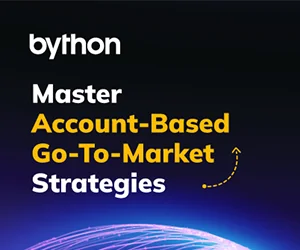The heart of every business is its finance. Without adequate financing it is possible for a business to remain on the same spot for 10 years, but you do not want that for your business. Below you will find 16 steps to follow to complete a financial checkup for business. Improvement, profits, and overall success is always the goal. Let’s image that the business is you. Typically, you undergo regular check-ups or annual physicals to ensure your health is solid and body is strong. Doing the same for your business is equally as important.
Before you go for your check-up, you actually do not know what exactly is wrong with you but you suspect all is not well. It is after your check-up that you know exactly what is wrong and the type of medication you need. This is exactly how financial checkup works. If it is not conducted regularly, you will keep on guessing what is causing financial leakages in your business and if this is not tackled on time, your business may crumble.
However, that won’t happen if you take the following steps:
How to Conduct a Financial Checkup
Step 1: Assess Current Revenue Against Future or Existing Revenue Goals
If your business does not have a budget that breaks down your anticipated revenues and expenses, then you are in the wrong. It is important for you to know that a budget isn’t meant to gather dust once it’s drafted. It’s a document that will help you make better decisions and highlight the areas you need to work on financially.
This is the reason you need to compare and contrast your current budget and revenue goals to your actual results. Have you fallen short of your target? If yes, why and how can you adjust your spending and get back on track? If no, set new goals and push yourself further.
Step 2: Diversify
While you review your revenues, observe how much of your income comes from one client or one product. If too large a portion comes from one source, consider the resultant effect on your business if that source dried up tomorrow? Would your business still thrive or barely survive? If you are on the weaker side, then you need to diversify.
Step 3: Outsource
What percentage of your time is spent on non-revenue-generating tasks such as social media and website maintenance? If it is too much, outsource these tasks to other people so you can have ample time to focus properly on your business.
For example, to handle your social media, you can hire a social media handler. All you need do is put out a BOLO for them.
Step 4: Review Your Client List
In business, all your clients can never be the same. While some will haggle over price of your product or service, others will pay instantly. While your product or service would never be good enough in the eyes of some, it will be the best in the eyes of others.
This is why you should constantly review your client list and cut off all the wolves in sheep’s clothing constantly depleting your energy and company’s reputation without adding value. In other words, keep bad energy away.
Step 5: Look at Year-Over-Year Trends
Observe your profit and loss reports in the past few years. From year to year, has there been any change in your expenses? If your business has grown, it is only reasonable that you increase cost though it is not compulsory, but if not, cut your cost without affecting the quality and quantity of your product or service negatively.
Step 6: Review Recurring Expenses
The business of subscription is booming daily. Most companies now pay weekly, monthly or yearly to receive products and services on a regular basis even when they do not need them as opposed to the regular method of buying products when they need them. Yes, it is convenient.
Yes, you have them in surplus, but is it not weighing negatively on your business? For instance, you pay for subscriptions you no longer use when you could actually save your money and reinvest it to bring more proceeds for you.
Step 7: Review Collection Procedures
Are your receivables outstanding? Is it for 30, 60, 90, 120 or even more days? This is the time for you to review your collection procedures. A research conducted by Commercial Collection Agencies of America discovered that “The probability of collecting on a delinquent account drops drastically the longer it goes unpaid. For instance, for 30 days past due, you have an 88.7% chance of collecting, but by 90 days past due, this chance drops to 68.9%”
So, how can you avoid tying up your hard-earned revenue in your balance sheet? You can.
Shorten Payment Terms:- A very good strategy is to effect a change on your payment terms from “net 30” to “payment due upon receipt” so that your customers will keep you at heart and do a follow up on it after 1 and a half week.
Follow up your customers immediately their payments become past due:- This will not only help you obtain your money but build your relationship with your customers showing them that you actually care and want to know what is going on with them.
Step 8: Review Terms in Contracts & Invoices
It is quite basic that your customers can never pay on schedule if they have no idea of what your schedule is. Make sure your customers’ contracts and invoices set clear expectations for when your payments are due and the resultant effect of late payments.
Will you first discuss with them? Will you cancel their order? They need to know.
Step 9: Review Late Fees
You need to check if you pay any late fees. If you do once in a while, it’s actually bad but not totally bad but if you pay late fees regularly, slowly but gradually, it will affect your business in the long run so it is something that you should constantly review and avoid as much as possible.
Step 10: Review Your Fixed Assets Schedule
As a company, what are the things you own? Every organization needs a fixed assets schedule and this must include a description of each asset as well as its date of purchase and price. This is a list that should be reviewed at least twice a year so you can check and balance items, remove the unnecessary and include the relevant.
This list could just be a simple Microsoft word spreadsheet maintained by your accountant.
Step 11: Do a Repair & Replacement Check
Your business property such as vehicles, hard equipment, and computers should be inspected regularly and properly. You should know if any of them needs maintenance or outright replacement. You can further advance and set out money for the equipment that do not need immediate replacement but in a year or two.
Step 12: Monitor Your Online Reputation
Basically, the reputation of your business is a big factor that will determine if your business will go far or die gradually, especially in today’s world where everything you do can go viral on the internet before you realize it. You do no need to pay people to post good reviews about your business. If you serve your customers properly, they will tell others.
However, if you notice a negative review you are sure shouldn’t be there, quickly look into it and have it removed. You can even go as far as suing the person who posted it for trying to dent your public image.
Step 13: Review Your Legal Structure
Are you operating a sole proprietorship, limited liability company or partnership? Is that structure still as good as it used to be or are you due for a change? It is important you know that the bigger your company expands, the more you should constantly review your legal structure so you can gain more benefits.
Step 14: Check Your Business Insurance Coverage
In what ways has your business changed over the past couple of years? Is it your business size, structure or business model? You need to know because these little changes can negatively or positively affect the type and amount of insurance coverage needed to protect it.
The insurance program you began your company with may no longer cover you or your employees. Schedule several meetings with your business insurance agent, so they can look at those changes with you and shed more light to your confusion.
Step 15: Test Your Online Security
Is your online presence secure? Is it free from viruses, hackers and the likes? Are the details and information of your clients safe in your hands? Whether Yes or No, take a look at these steps from the National Cyber Security Alliance to ensure your data is protected because you can never be too sure:
- Double check the security software on all of your devices to protect against viruses, malware, and other online threats.
- Switch on automatic software updates if that’s an option.
- Ensure you use strong passwords and two-factor authentication whenever possible.
- Back up your data and that of your clients in the cloud or on a separate hard drive on a regular basis.
- Make sure that access to data or critical systems is limited to employees who need it to perform their jobs.
- Conduct training sessions for your employees to know when to open or never open suspicious links in email or visit unknown websites.
Step 16: Review your retirement plans
After several years of toiling and sweating, what can you show for it? Is your profit substantial enough without reducing the quality of your goods or cutting corners? You need to review your retirement plan today because it will also show you who is taking over once you’re gone.
Final Thoughts
One important thing is that financial checkups should be conducted every year or even bi-annually or else, financial issues will creep in.








